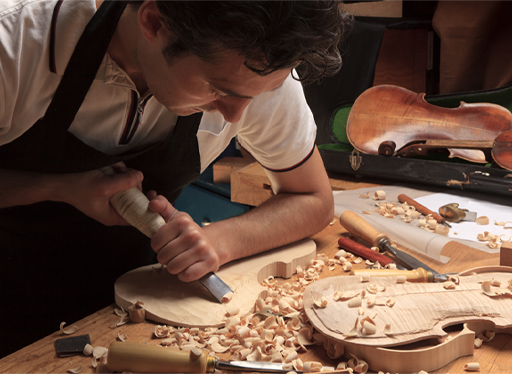2 Timbre
One factor which may dictate the range of a melody is the physical limitations of an instrument. The range of notes it is physically possible to play on an instrument may be divided into low, middle and high areas which are referred to as registers. An instrument’s register can have a dramatic effect on the character of a melody. Register is one element that makes up the overall the sound quality of an instrument, collectively known as timbre or tone colour. This occurs as a result of different sound wave patterning produced as the instrument vibrates. Construction material can have an impact upon this (for example, wood, metal or gut), or the shape of an instrument. Instruments are often grouped into families which reflects the way they produce sound: plucking or bowing (strings), blown (wind or brass) or struck (percussion, keyboards).
The way an instrument is played can also impact upon tone colour, for example, the sound might begin and end very suddenly (detached or staccato) or there might be a smooth progression between different pitches (legato). Many instruments enable the sound to be muted which changes the sound quality, and others enable the sound to be produced in a different way, for example, plucking the string (pizzicato) rather than producing sound with a bow; or fluctuating the pitch (vibrato). These sound effects are often specified by the composer as performance directions, and are known as articulation.
Activity 7
Explore the Philharmonia Instruments website [Tip: hold Ctrl and click a link to open it in a new tab. (Hide tip)] and explore three instruments from the different instrument families (strings, wind/brass, percussion or keyboards). Watch the associated videos so you can hear the range of sounds your chosen instrument can produce.

